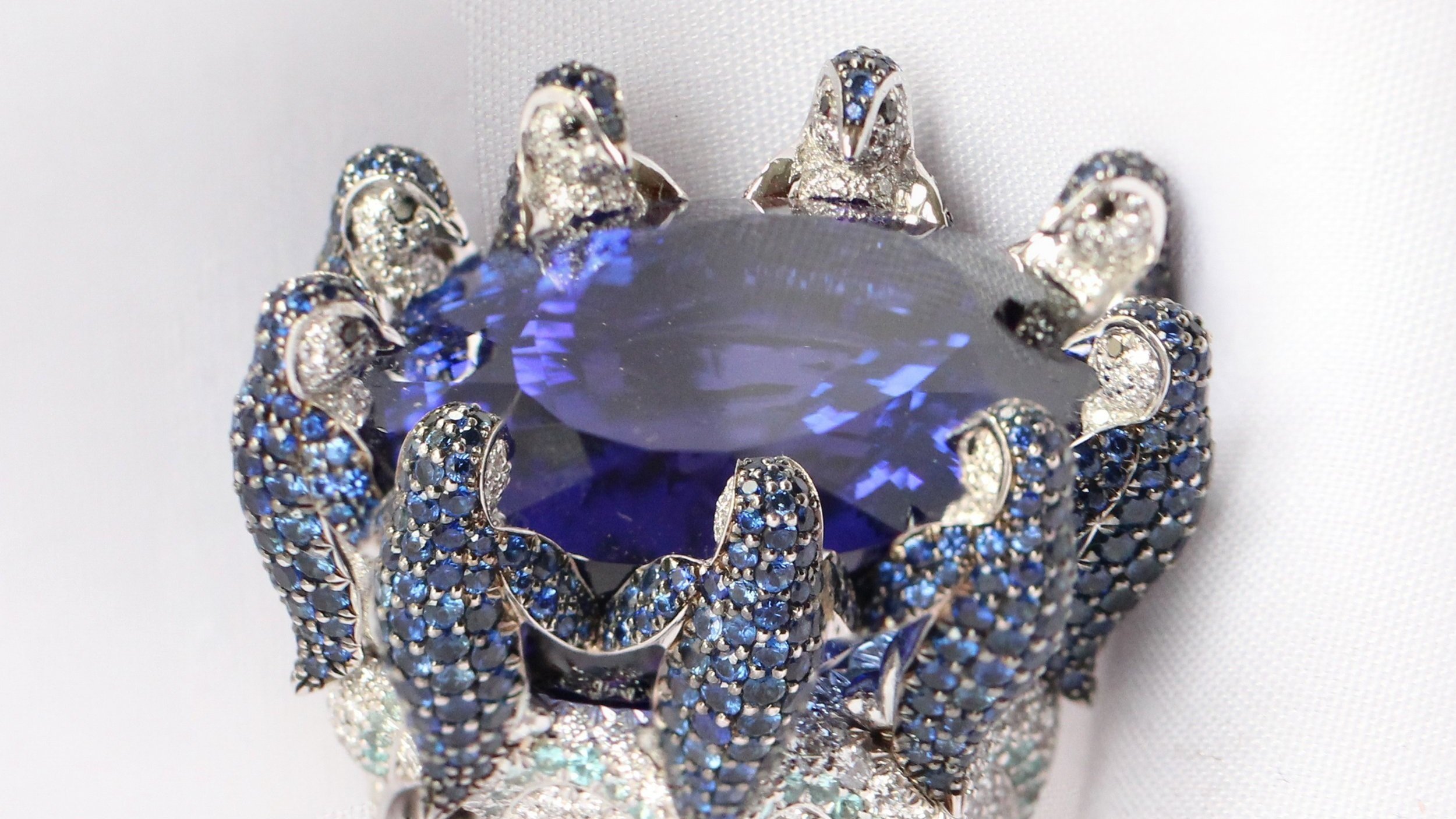Tanzanite
“Its colour captures the blue of the ocean with shades of the midnight sky and flashes of violet”. (Tiffany’s Chief Gemmologist, Melvyn Kirtley).
Tanzanite is a relatively recent addition to the kaleidoscope of coloured gemstones used in jewellery. In 1967, Ali Juuyawatu, a Masai tribesman, discovered a collection of intense violet-blue transparent crystals in Merelani, north Tanzania. Excited by the prospect of having discovered a deposit of Sapphires, he brought the stone to Manuel d’Souza, a local fortune hunter who swiftly registered four mining claims in the area. Although the sites proved to lack Sapphire deposits, the vivid blue-violets stones found there were mined to rapid commercial success.

Tanzanite is a blue to violet form of the mineral, Zoisite. Its distinct colour is less saturated in smaller stones, with stones of above five carats carrying deeper and more intense shades that are highly valued in jewellery. Tanzanite is transparent, with some poorer quality stones baring eye-visible inclusions. It is typically cut in cushion or oval cuts to best showcase its unique pleochroism. It has a rating of 6-7 on the Mohs hardness scale which makes it possible to cut intricately but also durable enough to withstand daily wear when set in rings. Tanzanite is an increasingly popular choice for an alternative, but strikingly coloured engagement ring.
Originally named Blue-violet Zoisite, the unusual stone was renamed in 1968 by Tiffany & Co. (the gems main distributor) in reference to its country of origin: Tanzania. Tiffany & Co. launched the stone onto the global fine jewellery market with collections created by their top designers, Donald Claflin and Jean Schlumberger. The romance and mystery of Tanzanite’s two-toned colouring makes it an enduringly attractive stone for Fine jewellery.

